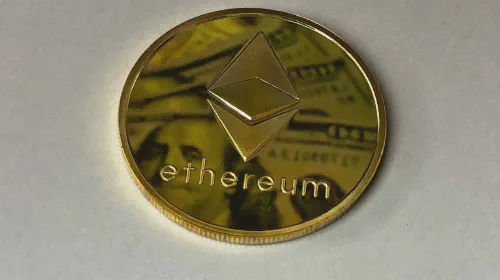Are Nfts Good or Bad for Artists and Musicians?
Salomon Kisters
Sep 19, 2022This post may contain affiliate links. If you use these links to buy something we may earn a commission. Thanks!
NFTs have generated much hype over the last couple of years. They have been used to showcase digital artwork, as assets in online metaverses, and as items in video games. We’ve now come to the point where many celebrities back NFTs.
Opinion among internet users is divided on whether NFTs are good or bad. Some folks buy the hype, claiming that it gives them a new opportunity for creating (or acquiring) value in the digital economy. Others are simply not buying into it, often calling them a scam. NFTs also remain controversial due to other issues.
Which begs the question are NFTs really good or bad for artists and musicians? We’ll dive into this topic in this article. But before we look at this question, a short explainer is due.
What is an NFT?
The acronym NFT stands for ‘Non-fungible Token.’ In a technical sense, an NFT is a piece of digital artwork that is created and stored on a server connected to a blockchain network. It is, therefore, a token that is owned by a specific user on a blockchain.
That explains the token part. What makes it non-fungible?
Let’s first look at what fungible means. An item is fungible if it can be replaced by an identical item or something having the same value. That is to say, it is substitutable. Money - like a 1-dollar bill - is an example of a fungible item.
You can replace it with another currency or item. And it remains a 1-dollar bill. There are also many dollar bills like it in the market.
But what if the same dollar is signed by a celebrity like Snoop Dogg? Suddenly, it’s one of a kind and limited in supply. It’s now a non-fungible Dollar bill. NFTs are crypto tokens that are similarly unique and non-fungible.
What Does an NFT Mean for the Owner?
Since an NFT is unique, it represents an asset that can be accessed through a blockchain network by its owner. If it has a fixed value, then the value is attributed to whoever owns it. NFTs can represent many things:
- The price of digital artwork (yes, pixels)
- A concert ticket
- Proof of participation in a specific community project
- Proof of attending a once-in-a-lifetime event
- Your electronic health records
- A profile picture (also called an avatar)
- A helmet you own in Skyrim but want to transfer into another game
- A title deed to your house
- And, of course, a music track (because that’s also data that can be decoded by sound hardware).
How Do NFTs Work for Artists and Musicians?
NFTs can represent items or commodities for people in the creative industry – digital artists, 3D modelers, and musicians.
Here’s a list of some NFT ideas for artists and musicians:
- Computer-generated avatars derived from a template that has defined features (like BAYC avatars)
- Unique digital artwork that they create themselves (including commissioned art)
- Video game skins
- Memes
- Funny videos
- Tweets
- Self-destructing NFTs
These items are JPGs, MP4s, and 3D model project files, among other formats.
Here are some NFT ideas for musicians:
- Album covers
- Standard album tracks
- Algorithm-generated music tracks (similar to template-based avatars made by artists)
- Song lyrics
- Music videos
- Community membership tokens
- Concert tickets
Image and video content are represented in the same formats as the digital assets mentioned for artists. Music files are usually stored in MP3, WAV, and FLAC formats.
What Makes NFTs Valuable?
When talking about conventional works of art, we tend to associate them with physical items. Things like paintings, merchandise, and music CDs are familiar items to us. But NFTs are not physical assets. They also don’t mean that you directly access digital assets on your computer.
What does that even mean?
Digital files for images and music are not stored on a blockchain. In fact, blockchains are not really designed for storing these files. The files are stored on another web server connected to the blockchain database, such as IPFS and Arweave.
NFTs simply represent proof of ownership or control over these digital assets. In other words, they are transactional records connected with digital assets and give you some privileges that would otherwise be unavailable to you. That could mean being able to load up a higher resolution image of a price of digital art or simply being able to play a music file online.
So what this means is that NFTs define your relationship with the original content creator. NFTs are a way of saying that you support your favorite artist, but through a digital transaction - on a decentralized network.
Instead of buying the artwork in dollars, you’re buying it with cryptocurrencies, whichever one is acceptable on the blockchain. And you’re part of an exclusive club. NFTs may not be tangible items, but a notable psychological element drives their ownership and value.
Since they are also available in limited quantities and tradable on a secondary market, NFT holders can buy and sell these as they please.
Pros of NFTs for Artists and Musicians
They Stay Forever
NFTs are immutable, meaning they don’t change their form on the internet. As long as the blockchain is functioning, you’re good. This is almost guaranteed to be a long time because of decentralization.
The Artists Get to Control their Value
The beauty of NFTs is that the artists release them by setting their own terms, which are set against community expectations. Artists will be able to create communities of invested fans, instead of releasing commercial merchandise in an attempt to fish for engagement metrics.
Meaningful Utility
NFTs can be used as passes for exclusive events like concerts, backstage passes, and even access to a discord server.
An Alternative Revenue Stream
NFTs allow artists to earn cryptocurrency, which they can use as an investment or trade for fiat currency. As a bonus, some NFT platforms also give artists and musicians a cut when their NFT is transferred to a new owner.
Digital Experiences
NFTs go beyond just being a set of digital collectibles. By crafting fun and interesting ways to mint and obtain NFTs, artists can create memorable digital experiences for their fans. These experiences can be converted into long-lasting community partnerships.
Representation in the Web3 Space
NFTs are quickly becoming a digital marketing trend. Creatives can use them to have a presence in Web3 cyberspace, which is defined by decentralized networks that are less vulnerable to internet censorship.
Cons of NFTs for Artists and Musicians
NFTs Won’t Automatically Become Valuable
Every artist or musician wants to make it big. But NFTs are not the primary way to do that. If you craft a piece of digital artwork, attaching a rare crypto token to it alone will not make anyone interested in it. For many artists, scarcity is not a problem, but obscurity is. In other words, they represent an opportunity cost for building a real community.
NFT Projects Can Take Time and Effort to Build
It’s not always easy to convince technical or financial backers to provide you with the assistance you need to start an NFT project. You will have to make a hustle for it, and it only piles up on your work schedule.
Your Fans Might Not be Able to Participate
Cryptocurrencies can be confusing to some people. Many people cannot access blockchains because they can’t buy cryptos. Still, some who can buy crypto may not know how to cash out. So your fans might need a lot of help to figure out how to become part of your NFT project.
Cryptocurrency is Volatile
We’ve all heard stories of cryptocurrency market crashes. Since NFT value is inherently tied to cryptocurrency, your holdings can take a nosedive in case of a sharp downturn.
Web3 has its Share of Problems
Cryptocurrencies and NFTs are digital assets and are vulnerable to theft from hackers. Cryptocurrencies are also used by people for questionable transactions. This, along with the general lack of knowledge about cryptos, is a major reason why NFTs have a negative reputation. You need to understand how to keep your assets and your community safe from the abuse that comes from shady users.
Environmental Issues
Decentralized networks require multiple computers to run. There’s no escaping that. Many computers running a network have higher average power usage and a higher carbon footprint. Climate change is a big concern now, and you may want to consider how this affects your image.
Final thoughts
As you can see, there are plenty of ways NFTs can be useful for creatives. Both artists and musicians can use NFTs to power their digital self-expression or create engaging digital experiences for their fans. However, NFTs are not without drawbacks and require serious thinking to sell to a community.
Have you got an NFT project in mind to help build your community? OrginStamp is the perfect place to get started. Contact us today.
Stay informed with the latest insights in Crypto, Blockchain, and Cyber-Security! Subscribe to our newsletter now to receive exclusive updates, expert analyses, and current developments directly to your inbox. Don't miss the opportunity to expand your knowledge and stay up-to-date.
Love what you're reading? Subscribe for top stories in Crypto, Blockchain, and Cyber-Security. Stay informed with exclusive updates.
Please note that the Content may have been generated with the Help of AI. The editorial content of OriginStamp AG does not constitute a recommendation for investment or purchase advice. In principle, an investment can also lead to a total loss. Therefore, please seek advice before making an investment decision.

7 Reasons Why Ethereum Is Different From Bitcoin
In this article, we’ll look at the differences between Ethereum and Bitcoin and see where Ethereum improved upon its blockchain technology by learning from its predecessor.

Are Nfts Bad for the Environment?
Energy consumption is the main issue that people have with cryptocurrencies and NFTs. But how bad are NFTs for the environment after all?

Ethereum vs. Ethereum Classic - What's the Difference?
Did you know that Ethereum Classic was the original form of Ethereum? In this post, we will discuss the difference between the two.
Protect your documents
Your gateway to unforgeable data. Imprint the authenticity of your information with our blockchain timestamp